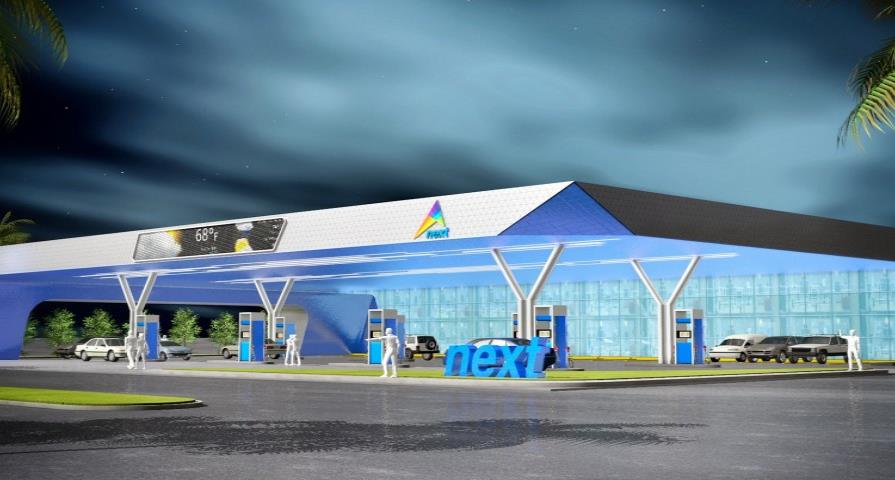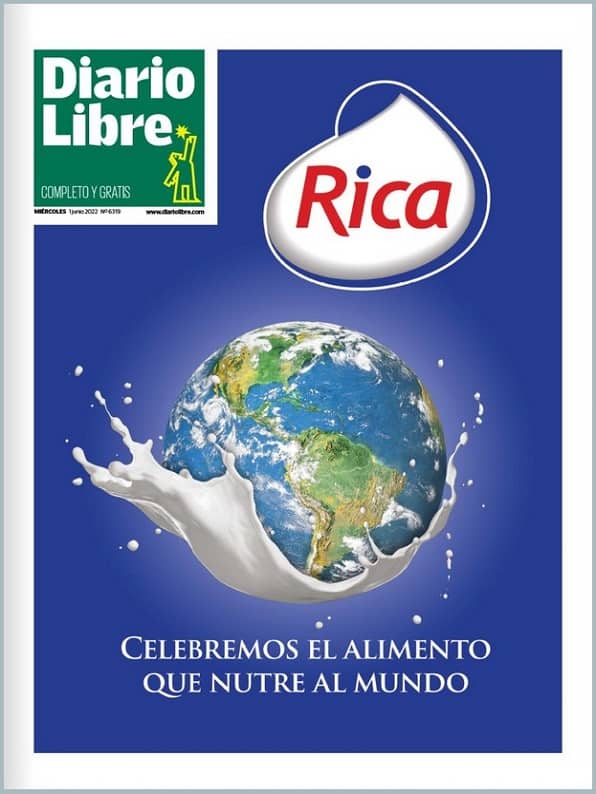New gasoline station on Lincoln, between rejection and permits
They question compliance with regulations for this type of business

SANTO DOMINGO. In order to install a gasoline station in the city a minimum distance of 700 linear meters between one gas station and another, and 200 m from a school or hospital is required. Attending to these parameters, the construction of a new locale on Abraham Lincoln Ave., next to another station, to a school and two health centers, has generated rejection from everyone between the management of Esso Dominican Republic to all of the neighbors of the area.
The legal representation of the project says that the linear meters are measured by the road. According to this, and given that some months ago city government prohibited a turn left towards Victor Garrido Puello Street - which permits access to the Esso station (La Lira) . Now, a driver has to keep going until 27 of February Avenue, make a U-turn and continue back, a total distance of nearly 1000 m.
"The distance is linear by the road (...) The judges have given sentences in this context," stresses the lawyer for the project, and specialist in hydrocarbons, Guillermo Valera. It is also up to the technicians from the Ministry of Industry and Commerce to carry out evaluations and, according to investigations by the Diario Libre, the distance by the roadway is a parameter to be considered.
Nevertheless, the management of Esso Dominican Republic does not have the same opinion. "The Law is very clear - he says - and established linear meters, and the law was established because a car was going to have to make a U-turn on Lincoln or at 27 of February, it was also over the issue of safety. Just imagine that an incident would happen, the incident is not going to happen on Lincoln, it is going to happen on 27 of February, the incident is going to take the linear meters."
The new station will sell gasoline and diesel. It is being built on the corner of Abraham Lincoln and Rafael Augusto Sanchez, on 2842 m² of land. It is at the stage of the foundations and the excavation of the cisterns and of the septic tank. It will have four 10,000 gallon fuel storage tanks.
With an investment of approximately US$2 million, it promotes itself as the first "green station" in the country for its closed concept and low sonic and environmental contamination. It is funded by capital negotiated by the Distribudores Internacionales de Petroleo (DIPSA) and a group of private investors, for the use of the ‘Next' brand of fuel, and expects to generate as many as 30 direct jobs on each shift.
Besides the distance between gasoline stations, the legal framework accepted by Industry and Commerce establishes that a gasoline station cannot be put up less than 200 m from a school or hospital. Near the project is the St. George School - which does not have an opinion regarding the station - and to centers for medical services.
"We are 201 m from the school," says lawyer Valera. He defends the project arguing that the closest medical center is a professional building. He refers to Medical, which has received the petition of neighbors to join in an effort to collect signatures in order to request the authorities the suspension of the construction. Nearby also is ARS Yunen, which offers medical services.
Yesterday representatives of the 63 apartments and condominiums that surround the ground under construction, held a press conference in order to show their discontent. José Antonio de Los Santos, the administrator of the Alessandra condominium tower, did not discard a lawsuit.
"With a gasoline station, besides the danger, the apartments go down in price," a resident complained days before.
Permits and pending permits
Just as the vehicular fleet has grown - which is over 3.2 million -, the business of gasoline stations has expanded over the last few years. From four distributors, there are now more than 20. It is a type of business that attracts the attention of investors both private and political.
It is estimated that there are more than 650 gasoline stations in the country, which obtain margins of profit for each gallon. Just in obtaining the required permits, lawyer Valera said that they spend some US$100,000.
The administration of the new station sent Diario Libre a copy of the permits obtained so far in order to authorize the project. The file contains form 011 from Industry and Commerce with the legal requirements for the authorization. This includes two certificates of No Objections from the Ayuntamiento dated January 2014. The certifications covered the proposal and the demolition phase of the project.
The file also has an environmental permit from the Ministry of the Environment from November 2013; a certificate of No Objection from the Fire Department from July 2012 and the Renewal of the Permit of No Objection of the Civil Defense from January 2014.
Missing are the authorizations from the National Cadastral Office and from Public Works. This last one, Carlos Rivas, the manager of DIPSA, reported that is in the process of being issued.
The executive said he felt the complaints by the neighbors regarding the project were normal. Nevertheless he feels that if the authorities have issued the permits, it is because they feel that the station is important, and they made the corresponding measurements.
Nevertheless, the general manager of Esso Dominican Republic assured the Diario Libre that in the past he expressed to the competent institutions the impropriety they feel regarding the new project. He said that they are studying the possibility of perhaps filing some legal recourse of opposition.
"We support the growth of gasoline stations, as long as it is done in compliance with the laws, and the law is very clear with regard to the requirements of distance between gasoline stations in existence, hospitals, schools and churches. Then, when you see the distance that there is between this new station that they want to build and La Lira, evidently it does not comply with the minimum distance required by the law," said the manager of Esso Dominican Republic, Miguel Estepan.
Rivas, from DIPSA, estimated that the construction of the station could be done within a regular time of some 4 months. "It is going to contribute to the solution of one of the problems that the neighbors themselves have in the area. They live complaining of the cars that stop on Lincoln, put the drinks on the roofs of the cars and turn up the music. The fact that there are businesses such as ours (...), so when they see what is going to result in greater illumination in the area, greater security, I feel that they are going to realize what is most convenient for them in the long term," he concluded.
"No left turn"
The road system along Abraham Lincoln Avenue does not offer opportunities to turn to the left at several intersections close to 27 of February Avenue, impeding access towards the Esso station. Up until a few months ago, drivers turned at the intersection with Victor Garrido Puello, which permitted a distance along the road, from the project under construction to the Esso station, of less than 400 m, but the turn was prohibited. This forces a driver to reach 27 February Avenue in order to make a U-turn.
Diario Libre consulted with the 3 institutions related to traffic issues in the National District regarding the prohibition to make left turns: the Metropolitan Transportation Authority (AMET), Public Works and the Ayuntamiento. Nevertheless, each corresponding department bounced the question to the other institution regarding responsibility for the prohibition without being able to name who carried it out.
The legal representation of the project says that the linear meters are measured by the road. According to this, and given that some months ago city government prohibited a turn left towards Victor Garrido Puello Street - which permits access to the Esso station (La Lira) . Now, a driver has to keep going until 27 of February Avenue, make a U-turn and continue back, a total distance of nearly 1000 m.
"The distance is linear by the road (...) The judges have given sentences in this context," stresses the lawyer for the project, and specialist in hydrocarbons, Guillermo Valera. It is also up to the technicians from the Ministry of Industry and Commerce to carry out evaluations and, according to investigations by the Diario Libre, the distance by the roadway is a parameter to be considered.
Nevertheless, the management of Esso Dominican Republic does not have the same opinion. "The Law is very clear - he says - and established linear meters, and the law was established because a car was going to have to make a U-turn on Lincoln or at 27 of February, it was also over the issue of safety. Just imagine that an incident would happen, the incident is not going to happen on Lincoln, it is going to happen on 27 of February, the incident is going to take the linear meters."
The new station will sell gasoline and diesel. It is being built on the corner of Abraham Lincoln and Rafael Augusto Sanchez, on 2842 m² of land. It is at the stage of the foundations and the excavation of the cisterns and of the septic tank. It will have four 10,000 gallon fuel storage tanks.
With an investment of approximately US$2 million, it promotes itself as the first "green station" in the country for its closed concept and low sonic and environmental contamination. It is funded by capital negotiated by the Distribudores Internacionales de Petroleo (DIPSA) and a group of private investors, for the use of the ‘Next' brand of fuel, and expects to generate as many as 30 direct jobs on each shift.
Besides the distance between gasoline stations, the legal framework accepted by Industry and Commerce establishes that a gasoline station cannot be put up less than 200 m from a school or hospital. Near the project is the St. George School - which does not have an opinion regarding the station - and to centers for medical services.
"We are 201 m from the school," says lawyer Valera. He defends the project arguing that the closest medical center is a professional building. He refers to Medical, which has received the petition of neighbors to join in an effort to collect signatures in order to request the authorities the suspension of the construction. Nearby also is ARS Yunen, which offers medical services.
Yesterday representatives of the 63 apartments and condominiums that surround the ground under construction, held a press conference in order to show their discontent. José Antonio de Los Santos, the administrator of the Alessandra condominium tower, did not discard a lawsuit.
"With a gasoline station, besides the danger, the apartments go down in price," a resident complained days before.
Permits and pending permits
Just as the vehicular fleet has grown - which is over 3.2 million -, the business of gasoline stations has expanded over the last few years. From four distributors, there are now more than 20. It is a type of business that attracts the attention of investors both private and political.
It is estimated that there are more than 650 gasoline stations in the country, which obtain margins of profit for each gallon. Just in obtaining the required permits, lawyer Valera said that they spend some US$100,000.
The administration of the new station sent Diario Libre a copy of the permits obtained so far in order to authorize the project. The file contains form 011 from Industry and Commerce with the legal requirements for the authorization. This includes two certificates of No Objections from the Ayuntamiento dated January 2014. The certifications covered the proposal and the demolition phase of the project.
The file also has an environmental permit from the Ministry of the Environment from November 2013; a certificate of No Objection from the Fire Department from July 2012 and the Renewal of the Permit of No Objection of the Civil Defense from January 2014.
Missing are the authorizations from the National Cadastral Office and from Public Works. This last one, Carlos Rivas, the manager of DIPSA, reported that is in the process of being issued.
The executive said he felt the complaints by the neighbors regarding the project were normal. Nevertheless he feels that if the authorities have issued the permits, it is because they feel that the station is important, and they made the corresponding measurements.
Nevertheless, the general manager of Esso Dominican Republic assured the Diario Libre that in the past he expressed to the competent institutions the impropriety they feel regarding the new project. He said that they are studying the possibility of perhaps filing some legal recourse of opposition.
"We support the growth of gasoline stations, as long as it is done in compliance with the laws, and the law is very clear with regard to the requirements of distance between gasoline stations in existence, hospitals, schools and churches. Then, when you see the distance that there is between this new station that they want to build and La Lira, evidently it does not comply with the minimum distance required by the law," said the manager of Esso Dominican Republic, Miguel Estepan.
Rivas, from DIPSA, estimated that the construction of the station could be done within a regular time of some 4 months. "It is going to contribute to the solution of one of the problems that the neighbors themselves have in the area. They live complaining of the cars that stop on Lincoln, put the drinks on the roofs of the cars and turn up the music. The fact that there are businesses such as ours (...), so when they see what is going to result in greater illumination in the area, greater security, I feel that they are going to realize what is most convenient for them in the long term," he concluded.
"No left turn"
The road system along Abraham Lincoln Avenue does not offer opportunities to turn to the left at several intersections close to 27 of February Avenue, impeding access towards the Esso station. Up until a few months ago, drivers turned at the intersection with Victor Garrido Puello, which permitted a distance along the road, from the project under construction to the Esso station, of less than 400 m, but the turn was prohibited. This forces a driver to reach 27 February Avenue in order to make a U-turn.
Diario Libre consulted with the 3 institutions related to traffic issues in the National District regarding the prohibition to make left turns: the Metropolitan Transportation Authority (AMET), Public Works and the Ayuntamiento. Nevertheless, each corresponding department bounced the question to the other institution regarding responsibility for the prohibition without being able to name who carried it out.


 Mariela Mejía
Mariela Mejía
 Mariela Mejía
Mariela Mejía